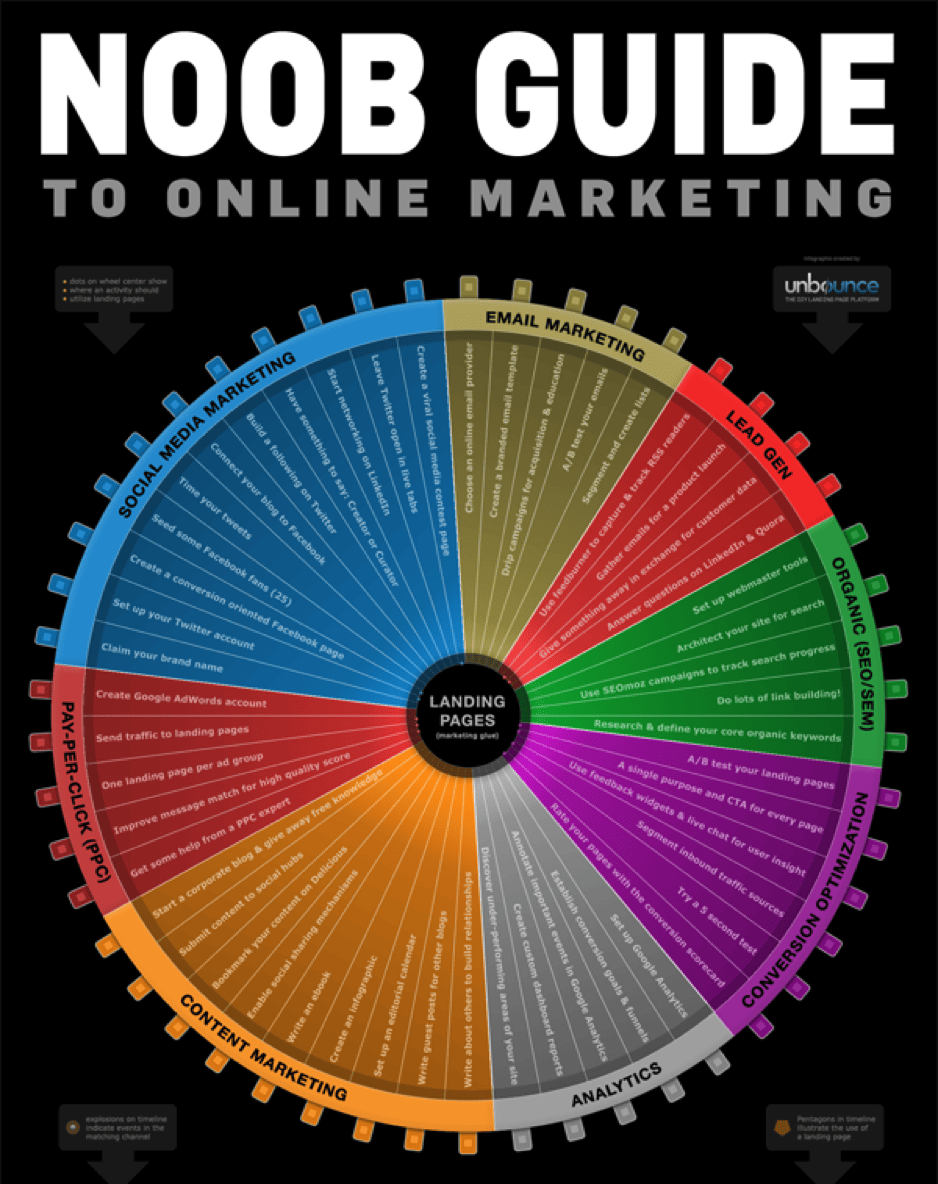
Are you interested in learning digital marketing?
First, let’s take a look at what digital marketing is before we discuss the basics and advanced tactics.
Before we get into step-by-step strategies, we’ll make sure we’re on the same page.
Table of Contents
Marketing via digital channels, including social media, SEO, email, and mobile apps, is called digital marketing. Any marketing method using electronic devices can be considered digital marketing.
An effective digital marketing strategy requires both online and offline efforts, both of which are important.
“When it comes to selecting a digital marketing strategy for our clients, I always recommend to adopt a multi-channel approach across owned, earned and paid media to increase marketing effectiveness and generate results, ” according to Donald Chan, founder of IMPACT, a leading digital marketing agency in Singapore.
How about billboards? That’s right.
We used to see the billboards of different companies or brands from a young age, right? Those billboards popped up in front of your eye side of the road.
It’s like a competition to hang the billboards as big as possible so that it attracts people’s attention.
There were times when bigger brands would even start a billboard war, such as this one between Audi and BMW, which was a lot of fun to watch:

Billboard advertising still costs a lot of money for a lot of our clients in 2022.
Advertising on billboards is mostly dead, either fortunately or unfortunately.
Think about it this way: Google and Facebook generate more revenue than any traditional media company. The focus of attention is on digital marketing, and that’s why it matters.
Because the future of driving looks like this, billboards, such as the ones above, will die:

The technology behind driverless cars is improving, and in the future, all passengers will not be watching the road, even though driverless cars already exist.
When you are driving a friend, don’t forget to look at the passenger seat next time you have time.
For a moment.
It’s likely that they’re still looking at their phones right now.
When people are not looking at the road anymore, how are those advertisements supposed to be seen?
Furthermore, electronic use is growing at an accelerating pace, while print advertising is declining.
It means that before you can close up shop and power down your old-school printing press, you haven’t got much time to figure out this digital marketing stuff.
A digital marketing strategy is based on two main components: online marketing and offline marketing. We will mention the different aspects of online marketing here only for completeness because we will discuss online marketing in a separate guide.
The 13 major categories of online marketing are as follows:
Here’s an infographic that portrays all kinds of online marketing in one chart, created by Unbounce.

Well, let’s dive into each marketing method one by one. Once you get the complete overview, you’ll understand how important and effective these marketings are nowadays.
Through affiliate marketing, businesses (advertisers) sell their products online directly to third parties (affiliate marketers/affiliates).
It is common for advertisers to provide their affiliates with a personalized referral URL (affiliate link) for use in their website content, blog articles, and social media posts.
In accordance with the affiliate agreement, the advertiser pays the affiliate for leads and sales generated by affiliate links.
Among digital marketing channels for customer acquisition, affiliate marketing ranked as the most effective in a PepperJam and Forrester survey.
For businesses that wish to convert customers and fans into referral partners who can increase revenue, this is a winning strategy.
Through social media channels such as Facebook, Instagram, LinkedIn, Twitter, Pinterest, and TikTok, businesses can reach their customers.
According to We Are Social’s Digital Report for 2021, there are 4.2 billion active social media users worldwide. Among those using social media, 27.5% research products before buying them. About 44.8% of consumers use social media to learn more about brands.
Due to the large number of people on social media, most brands are likely to be able to connect with their target audience via social media. You can also use social media to improve your SEO.
By using search engines such as Google, Bing, and Yahoo, businesses can reach their target market.
PPC is a method of ranking in paid search results via platforms like Google Adwords and similar platforms, while SEO focuses on rankings in organic search results pages.
Approximately 68% of trackable traffic comes from organic search (53%) and paid search (15%), according to BrightEdge research.
Therefore, organic search rankings have a significant impact on generating qualified traffic.
Businesses can communicate marketing messages through a variety of different channels through content marketing.
It includes content resources such as blog posts, knowledge base articles, support documents, white papers, and case studies.
As per Statista, nearly 60% of B2B content marketing spending and 40% of B2C content marketing costs are predicted to grow in 2021. Furthermore, 69% of businesses indicated they would spend money on content creation and production.
A well-rounded content marketing plan provides items for your email, search, and social media marketing departments to promote.
Advertisers are predicted to spend $1.33 billion on podcast adverts and sponsorships in 2021, according to Insider Intelligence by eMarketer. Podcast viewers in the United States are predicted to reach 144 million by 2025.
Businesses can use email marketing to target consumers who have agreed to accept marketing communications via email. Emails may be collected by businesses through their website, blog, and social media platforms.
According to Litmus research, businesses can expect to get $42 for every dollar invested in email marketing.
Use email marketing to retain people’s attention on your brand until they are ready to make a purchase if you want to convert more of your website traffic.
Influencer marketing allows enterprises to reach out to new viewers by utilizing prominent social media users. Brands work with celebs to sell their products online through promoted and paid partnership postings.
According to the State of Influencer Marketing, “sponsored posts earned an average of 7,806 impressions in 2020.” (unique views). In 2019, sponsored posts had an average of 4,827 impressions. An increase of 57% [over 2019].”
Influencer marketing could be extremely effective in raising a brand’s visibility in a specific audience.
Guerilla marketing provides businesses with free public relations for innovative, viral marketing strategies that individuals want to talk about.
Many guerrilla marketing efforts, such as flash mobs and enormous graffiti art walls, take place offline.
Because individuals will talk about and share their experiences online, it becomes an important component of your company’s digital marketing plan.
Public relations marketing assists companies to acquire media exposure for their brand. The purpose of public relations is to attract reporters and influencers to talk about your company, goods, and services.
According to the Worldwide Public Relations Market Report, the global PR market will increase from $88.13 billion in 2020 to $97.13 billion in 2021. The expansion is connected to businesses recuperating from the consequences of COVID-19.
When done correctly, PR marketing may augment a brand’s online visibility and connect activities.
Mobile marketing enables companies to reach out to customers via smartphones and other mobile devices. Mobile-targeted advertising, as well as SMS/text messaging, may help brands contact mobile users.
According to SimpleTexting’s SMS marketing research, 62% of customers polled claimed they have opted into text message marketing from at least one firm in the previous year.
Voice marketing enables enterprises to reach out to customers using voice-enabled technologies such as Alexa (Amazon), Siri (Apple), and Google Assistant.
Marketing using live or prepared audio content on audio-only platforms such as Spotify, Clubhouse, and Facebook Live Rooms is also included.
According to the Narvar Consumer Report, up to 45% of speech-enabled device owners utilize voice searches to shop.
Businesses can use video marketing to reach their target consumers. In most situations, this is accomplished through the use of YouTube and other video hosting sites.
According to Wyzowl’s State of Video Marketing survey, 78% of video marketers indicated that video helped enhance sales. According to 83% of video marketers, video boosts average hours spent on the website, and 86% say video increases web traffic.
Fill your content library with video, promote it as part of your link-building assets, and distribute it as part of your social media initiatives.
Streaming TV marketing enables companies to reach out to customers while they are watching their favorite TV shows online. Ad platforms may now provide precise targeting and outcomes assessment thanks to digital streaming.
As according to We Are Social’s Digital Report for 2021, 70% of internet users aged 16 to 64 stream TV programs over the internet.
Honestly, there is no ideal recipe for digital marketing; your plan will be fully dependent on your specific clients, market area, rivals, products or services, and other factors.
Hopefully, this offers you an excellent starting point for developing a digital marketing plan that works for you!
We hope you found this article helpful in learning how to add a background image in WordPress. You may also want to see how to set up an online store using WordPress. You may also want to see a guide on how to create a free shipping coupon in WooCommerce.
If you like this post, be with ThemeLooks and subscribe to our WordPress video tutorials on YouTube. We may also be found on Twitter, LinkedIn, and Facebook.